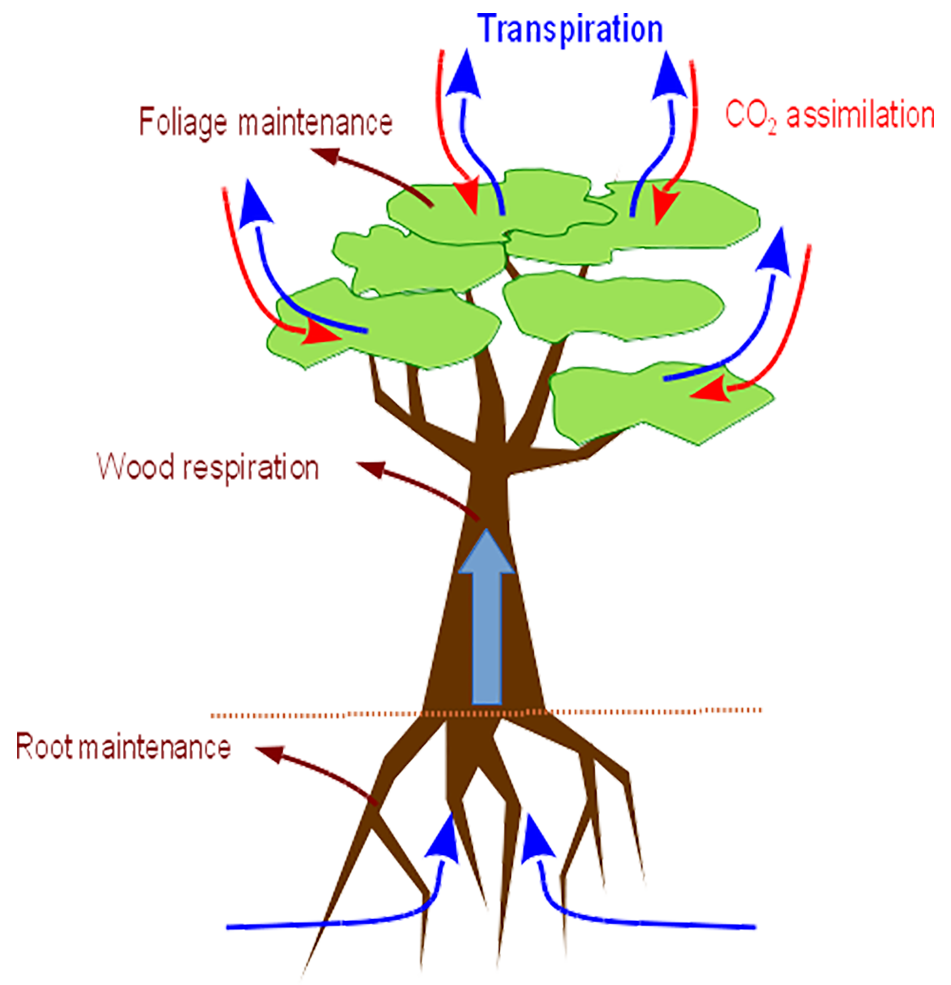Vegetation Optimality Model (VOM)

Prediction of vegetation water use in the absence of detailed, site-specific observations or in the distant future under changing environmental conditions is a big challenge. The objective of this project is to develop a model that predicts vegetation water use based on meteorological information, soils and topography only, without the need for prescribing site-specific vegetation properties or calibration against observed fluxes.
The Vegetation Optimality Model (VOM) was developed mainly for water-limited sites in Australia, but it has also been used successfully for simulating crops and wet sites in Australia. The model predicts the optimal water use and dynamic vegetation properties in order to maximise the net carbon profit of vegetation for a given set of environmental forcing and boundary conditions. The model code and additional information can be found here: external pagehttps://github.com/schymans/VOMcall_made
Related publications
- Lei, H., Yang, D., Schymanski, S.J. and Sivapalan, M. (2008): Modeling the crop transpiration using an optimality-based approach. Science in China Series E - Technological Sciences 51, p.60–75. doi: 10.1007/s11431-008-6008-z.
- Schymanski, S.J. (2008): Optimality as a Concept to Understand and Model Vegetation at Different Scales. Geography Compass 2(5), p.1580–1598. doi: 10.1111/j.1749-8198.2008.00137.x.
- Schymanski, S.J. (2007): Transpiration as the Leak in the Carbon Factory: A Model of Self-Optimising Vegetation. Perth, Australia: University of Western Australia. Available at: https://repository.uwa.edu.au/R/-?func=dbin-jump-full&object_id=8835&local_base=GEN01-INS01.
- Schymanski, S.J., Kleidon, A. and Roderick, M.L. (2009a): Ecohydrological Optimality. In M. G. Anderson and J. J. McDonnell, eds. Encyclopedia of Hydrological Sciences. Theory Organization and Scale. Chichester: John Wiley & Sons Ltd. Available at: onlinelibrary.wiley.com/doi/10.1002/0470848944.hsa319/.
- Schymanski, S.J., Roderick, M.L. and Sivapalan, M. (2015): Using an optimality model to understand medium- and long-term responses of vegetation water use to elevated atmospheric CO2 concentrations. AoB Plants. doi: 10.1093/aobpla/plv060. Available at: http://aobpla.oxfordjournals.org/content/early/2015/05/27/aobpla.plv060.abstract.
- Schymanski, S.J., Roderick, M.L., Sivapalan, M., Hutley, L.B. and Beringer, J. (2007): A test of the optimality approach to modelling canopy properties and CO2 uptake by natural vegetation. Plant, Cell & Environment 30(12), p.1586–1598. doi: 10.1111/j.1365-3040.2007.01728.x.
- Schymanski, S.J., Roderick, M.L., Sivapalan, M., Hutley, L.B. and Beringer, J. (2008a): A canopy-scale test of the optimal water use hypothesis. Plant Cell & Environment 31, p.97–111. doi: 10.1111/j.1365-3040.2007.01740.x.
- Schymanski, S.J., Sivapalan, M., Roderick, M.L., Beringer, J. and Hutley, L.B. (2008b): An optimality-based model of the coupled soil moisture and root dynamics. Hydrology and Earth System Sciences 12(3), p.913–932. doi: 10.5194/hess-12-913-2008.
- Schymanski, S.J., Sivapalan, M., Roderick, M.L., Hutley, L.B. and Beringer, J. (2009b): An Optimality-Based Model of the Dynamic Feedbacks between Natural Vegetaton and the Water Balance. Water Resources Research 45, p.W01412. doi: 10.1029/2008WR006841
Team: Stan Schymanski
Contact:
